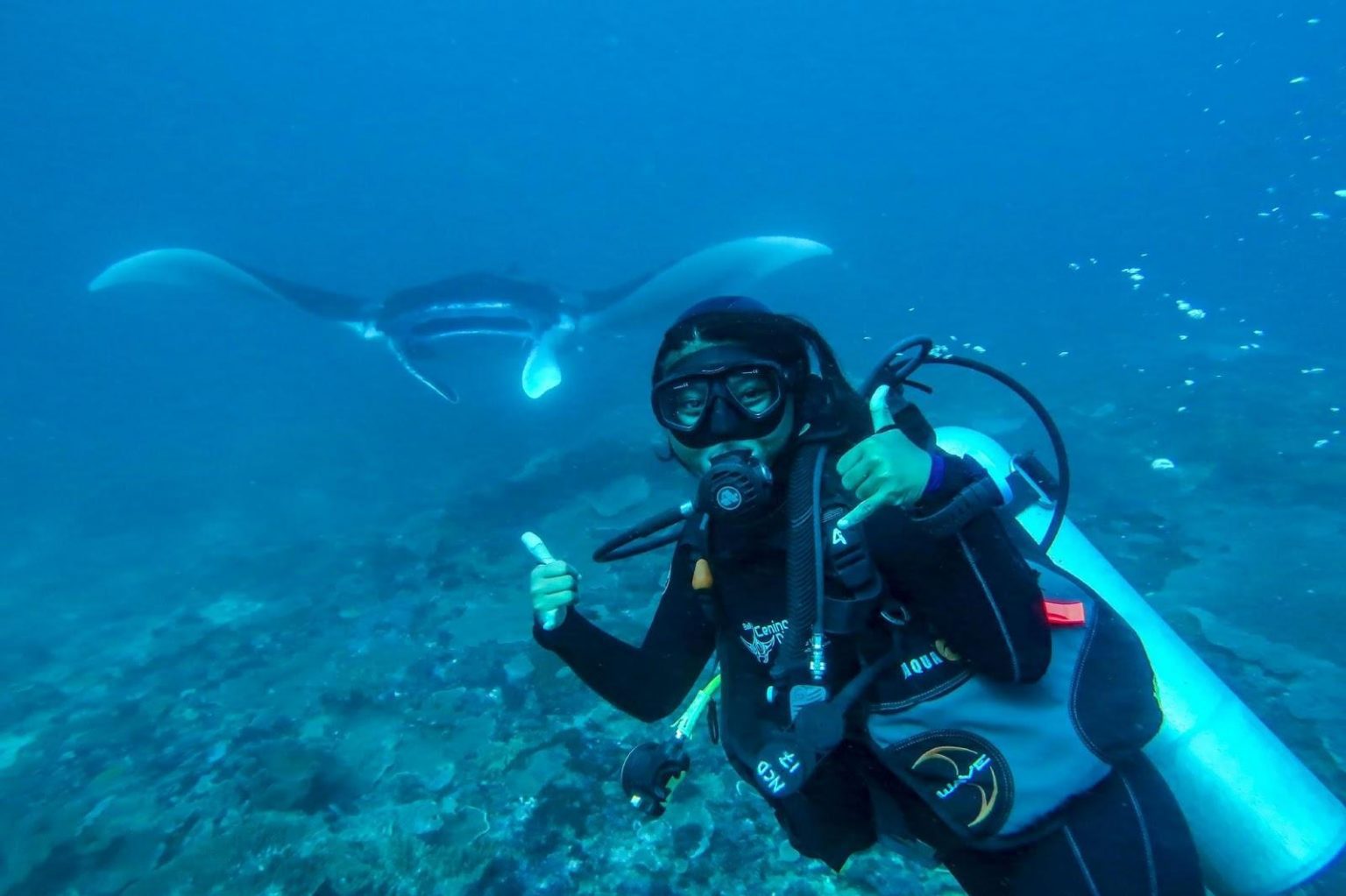Drone technology helps researchers count green turtles on the Great Barrier Reef
Researchers at Raine Island, the world’s largest green turtle rookery, have used a drone to conduct accurate population surveys, with stunning results.
Drone vision captured in December 2019 as part of the Raine Island Recovery Project showed up to 64,000 green turtles around the island waiting to come ashore and lay clutches of eggs.
Dr Andrew Dunstan from the Department of Environment and Science (DES) and lead author of the paper said researchers had been investigating different ways of conducting turtle population surveys.
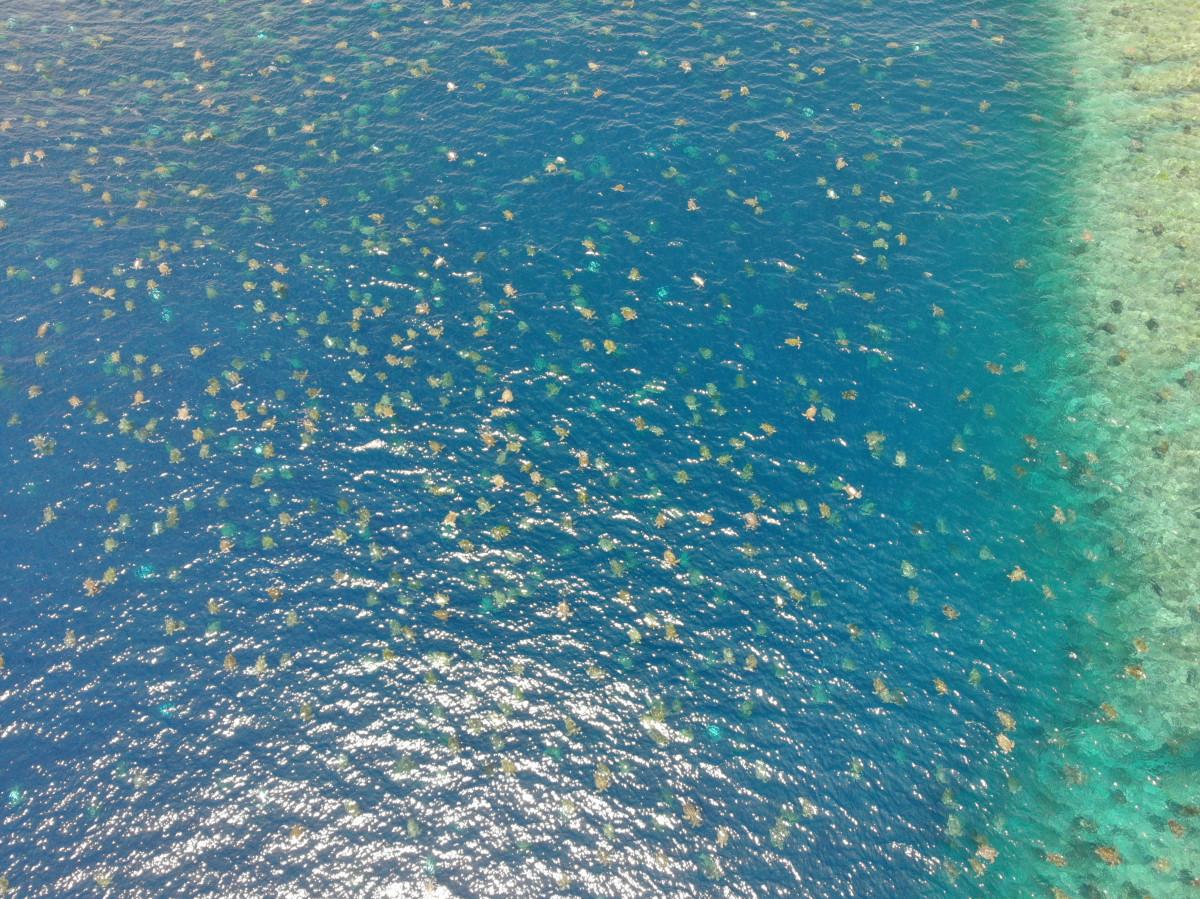
“New scientific research published in PLOS ONE found that drones, or Unmanned Aerial Vehicles (UAVs), were found to be the most efficient survey method,” Dr Dunstan said.
“Underwater video using a Go-Pro may also be a useful alternative for in-water surveys of turtles.”
“Previous population survey methods involved painting a white stripe down the green turtles’ shell when they were nesting on the beach. The paint is non-toxic and washes off in a couple of days.”
“From a small boat, we then counted painted and non-painted turtles, but eyes are attracted much more to a turtle with a bright white stripe than an unpainted turtle, resulting in biased counts and reduced accuracy.”
“Trying to accurately count thousands of painted and unpainted turtles from a small boat in rough weather was difficult. Using a drone is easier, safer, much more accurate, and the data can be immediately and permanently stored.”
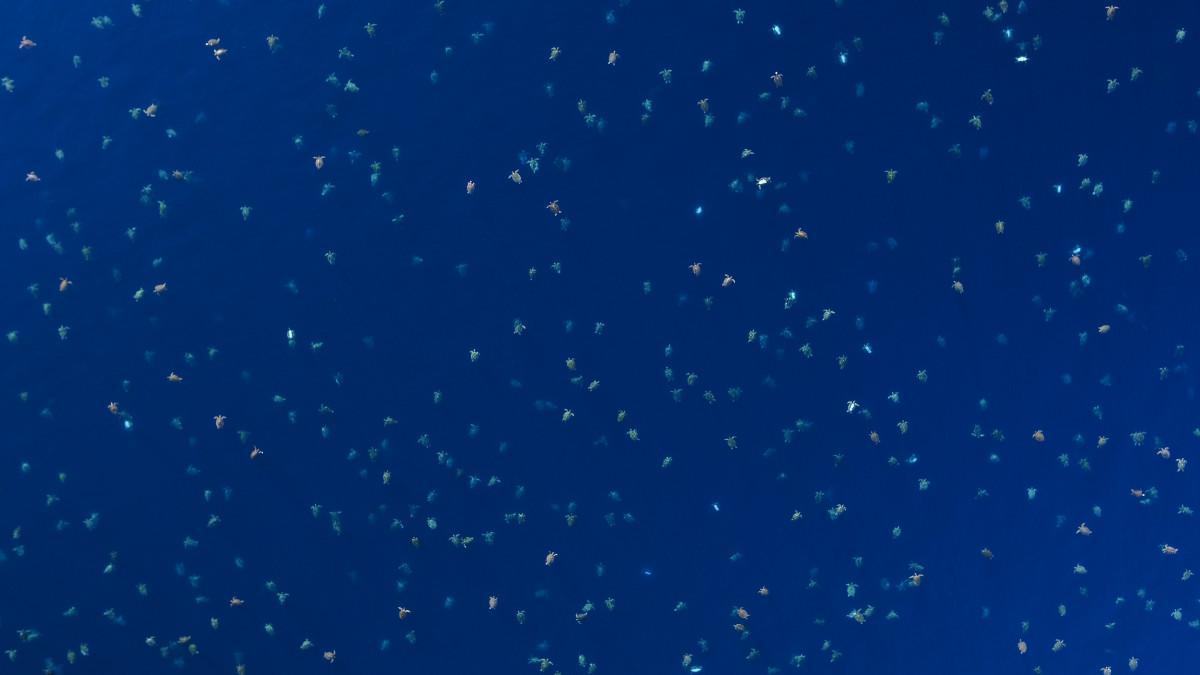
The drone vision was analysed, frame by frame in the laboratory, reducing observer error and allowing accurate counts on painted and unpainted turtles.
“The ratio of unpainted and painted turtles allowed us to estimate the total population for last December to be 64,000 green turtles waiting to nest on the island,” Dr Dunstan said.
Research partner Richard Fitzpatrick from the Biopixel Oceans Foundation said vessel- based counts were inaccurate.
“When we compared drone counts to observer counts we found that we had under- estimated the numbers in the past by a factor 1.73,” Mr Fitzpatrick said.
“By using drones we have adjusted historical data. What previously took a number of researchers a long time can now be done by one drone operator in under an hour.”
Great Barrier Reef Foundation Managing Director Anna Marsden congratulated the researchers on their outstanding work and results.
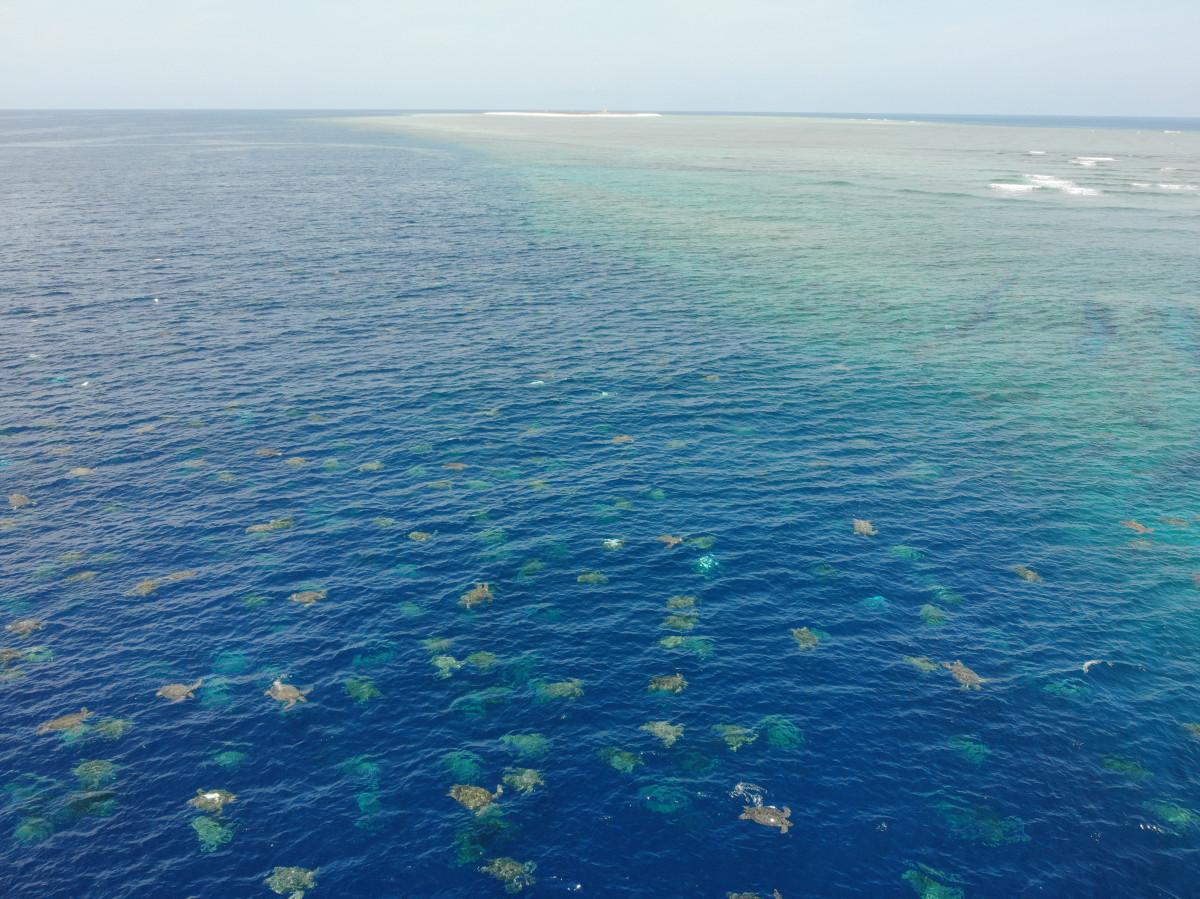
“We’re seeing the world’s largest aggregation of green turtles captured in these extraordinary drone images that are helping to document the largest turtle numbers seen since we began the Raine Island Recovery Project,” Ms Marsden said.
“This important research combines science and technology to more effectively count endangered green turtles.”
“Raine Island is the world’s largest green turtle nesting site and that’s why we’re working with our Raine Island Recovery Project partners to protect and restore the island’s critical habitat.”
“We’re taking action to improve and rebuild the island’s nesting beaches and building fences to prevent turtle deaths, all working to strengthen the island’s resilience and ensure the survival of our northern green turtles and many other species.”
BHP Mitsubishi Alliance (BMA) Asset President James Palmer said, “The Raine Island Recovery Project is a great example of business, governments, Traditional Owners and not-for-profits working together to protect the Great Barrier Reef, in this case the remarkable ecosystem of Raine Island. It’s great to see innovative technology like drones used in this way for turtle conservation.”
Dr Dunstan said the Raine Island Recovery Project is making a major contribution to the future sustainability of the world’s most important green turtle rookery.
“This research is of prime importance to the understanding and management of the vulnerable green turtle population,” he said.
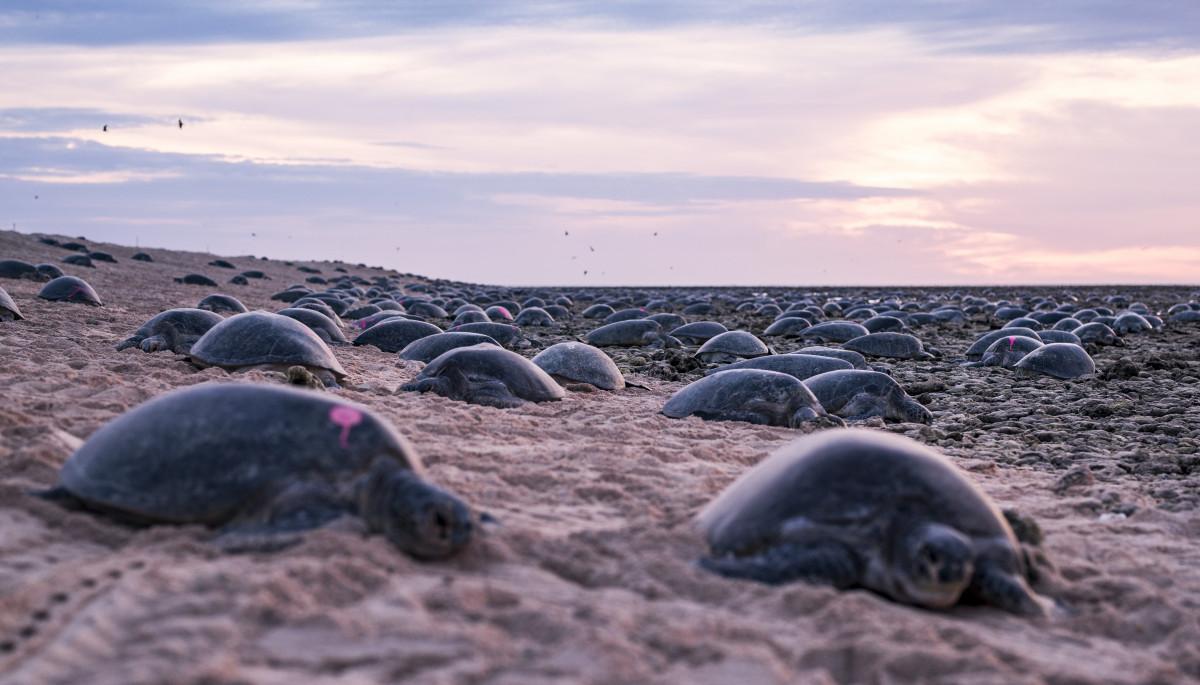
“In the future, we will be able to automate these counts from video footage using artificial intelligence so the computer does the counting for us.”
The five-year, $7.95 million Raine Island Recovery Project is a partnership between BHP, the Queensland Government, the Great Barrier Reef Marine Park Authority, the Wuthathi and Meriam Nation (Ugar, Mer, Erub) Traditional Owners and the Great Barrier Reef Foundation.
About Raine Island Recovery Project: Raine Island is a remote vegetated coral cay situated 620 km north west of Cairns, playing host to one of the greatest animal migrations on Earth. As many as 60,000 female green turtles migrate thousands of kilometres to lay their eggs here. Years of monitoring show the northern Great Barrier Reef’s green turtle population is in decline and without action, the entire population is under threat.
The Great Barrier Reef Foundation is the action station for the Reef, bringing together people and science to save this irreplaceable ecosystem and all its marine life for future generations.
Article provided by Great Barrier Reef Foundation & Queensland Government
All images supplied by Great Barrier Reef Foundation & Queensland Government
Want more conservation-related articles?
